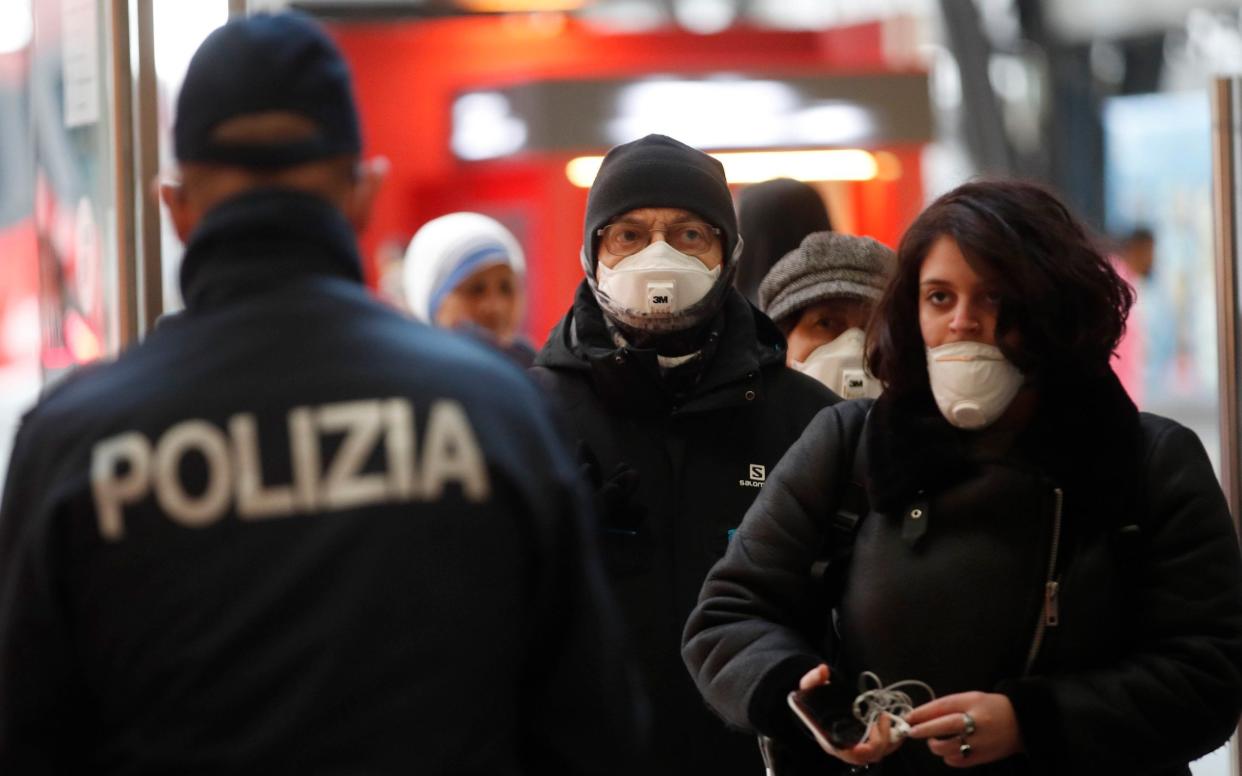Here's what it is like to be in Milan during Italy's coronavirus lockdown

Yesterday I was commissioned a piece that required me to do some interviews and take a couple of pictures. That meant I had to leave my house. “Is this safe for you?”, asked the editor. The question made me think: I was in Milan, Italy, a place where I’ve always lived, and where at no point in my life I’ve ever felt in danger.
But since Saturday afternoon things seems different. People — tourists, international students, workers from southern regions — were fleeing Lombardy like they were afraid of being here. I paused for a minute before writing back, “Yes, of course. I’m on it”.
Then I remembered that I couldn’t go out and roam around the city without a strong enough reason, and I wasn’t sure that pictures and interviews was considered such. According to the decree signed off by prime minister Giuseppe Conte on Sunday, people were recommended not to leave their house unless for practical needs, work and health-related reasons.
One of the bags in the trunk has Ari’s name-tag, a young woman originally from Avola, Sicily. She is 26 and attending the Academy of Fine Arts in Milan. She’s fleeing the city for at least one month, until the emergency fades away. “All my flatmates have left”. #COVID2019 #italy pic.twitter.com/oY7L6lzh5P
— Nadeesha D. Uyangoda (@NadeeshaUy) March 9, 2020
Being a freelancer, until a week ago I was free to move around the city, work on the ground, and interview people with no restrictions whatsoever. Now I have to have certification to exercise my right to move freely — a scenario I would have never imagined possible in a western European democracy. My friends advised me to wear a mask if I had to leave my house, worried that I could be infected — even though we were informed that the mask is of little help if you are not already infected. Of course, I considered the advice, but at the end decided against it. Since my editor couldn’t provide me with certification right away, I drove my car to Milan Central Station fearing I was going to be stopped and checked by the police.
I interviewed some people leaving the city, careful to keep a reasonable distance. I noticed that I wasn’t the only one paying attention to social distance, everyone was walking on eggshells.
The city itself seemed different. Milan Central Railway Station was a desolate place. At this time, a couple of weeks ago, there would have been crowds of people coming and going, chit-chatting and drinking their cups of espressos on the tables outside the nearby cafeterias.
My boyfriend lives close by, so I am used to sit at the same tables for my morning coffees. Most of them are closed now, the sign on the door says, “Due to coronavirus emergency, we are closed until further notice”. Some shops in this area are open, however there are no customers inside. On the window of these shops there is another sign, “Within this business premise we guarantee a minimum social distance of one metre. We kindly ask our customers to enter one or two at a time”.
Sign outside a shop window in #Milan. “This business adopts precautionary measures to prevent crowds and guarantee a minimum social distance of 1m” #Coronavirusitalia #COVID2019 pic.twitter.com/VAHjUentOX
— Nadeesha D. Uyangoda (@NadeeshaUy) March 10, 2020
My mother asked me to write and print something similar. She has a small business in our hometown, 20 minutes away from Milan, and was worried about the economic consequences of a lockdown. She said the town was empty and quiet today, with few or no people walking around — let alone customers. I think that eventually she will have to force her employees to use their vacation days, should the lockdown be in place until April.
Milan is a lively city, always full of people gathering around and moving fast. I wonder whether its vibrancy was what made this lockdown predictable and inevitable. Many of us downplayed the seriousness of coronavirus — even local authorities. The day before the outbreak in Codogno, a town in Lombardy, I was gathered around a table with a bunch of friends in a newly opened Chinese restaurant for a social event called #ChopsticksNight. The dinner was organised to express sympathy towards the local Chinese community, as they had been victims of persistent discrimination in the previous weeks due to fears about the coronavirus.
Hundreds of Milanese people joined the event, dining in different Chinese restaurants all over the city. When the next day I learned about the situation in Codogno, what I feared the most was a backlash against the Chinese community.
As some areas in Veneto and in Lombardy were considered Red Zones, the hashtag #MilanDoesntStop was becoming popular in the city. The Mayor himself, Giuseppe Sala, promoted it, urging people to live their day-to-day lives. I, too, was sceptical and believed people were overly dramatic about “something a bit more serious than a flu,” as said by Dr Maria Rita Gismondo, head of clinical microbiology, virology and diagnostics at Milan's Luigi Sacco Hospital.
Of course, since Sunday my everyday life is not the same as before, but what has changed even more is my attitude and that of people around me. Since yesterday I am a bit feverish, and even though I know that it is most likely a seasonal flu, I can’t help but worry about being infected and infecting people around me.
Nadeesha Uyangoda is an Italian freelance writer

